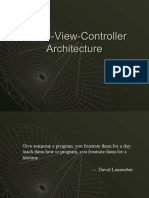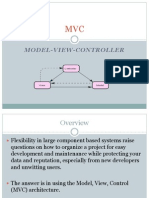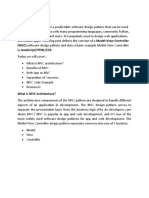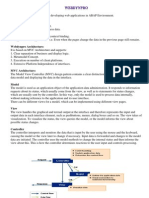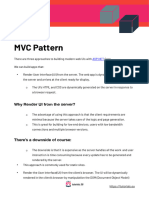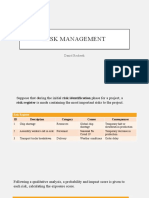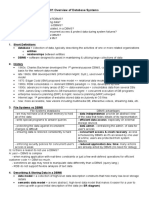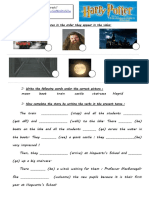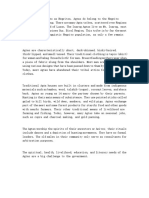0% found this document useful (0 votes)
60 views2 pagesMVC Intro
The document defines the Model-View-Controller (MVC) pattern, which was introduced in 1979 to help decouple data access and business logic. MVC has three main elements: the model represents the data and rules for accessing/updating it, the view renders the model data and updates based on model changes, and the controller translates user interactions with the view into actions that update the model. The view registers as a listener to the model so any model changes trigger view updates. When a user interacts with the view, the controller accesses and may update the model, which then notifies listeners like the view of changes. Some modified MVC designs place the controller between the model and view to mediate data flow in both directions
Uploaded by
Daniel ReckerthCopyright
© © All Rights Reserved
We take content rights seriously. If you suspect this is your content, claim it here.
Available Formats
Download as PDF, TXT or read online on Scribd
0% found this document useful (0 votes)
60 views2 pagesMVC Intro
The document defines the Model-View-Controller (MVC) pattern, which was introduced in 1979 to help decouple data access and business logic. MVC has three main elements: the model represents the data and rules for accessing/updating it, the view renders the model data and updates based on model changes, and the controller translates user interactions with the view into actions that update the model. The view registers as a listener to the model so any model changes trigger view updates. When a user interacts with the view, the controller accesses and may update the model, which then notifies listeners like the view of changes. Some modified MVC designs place the controller between the model and view to mediate data flow in both directions
Uploaded by
Daniel ReckerthCopyright
© © All Rights Reserved
We take content rights seriously. If you suspect this is your content, claim it here.
Available Formats
Download as PDF, TXT or read online on Scribd
/ 2







